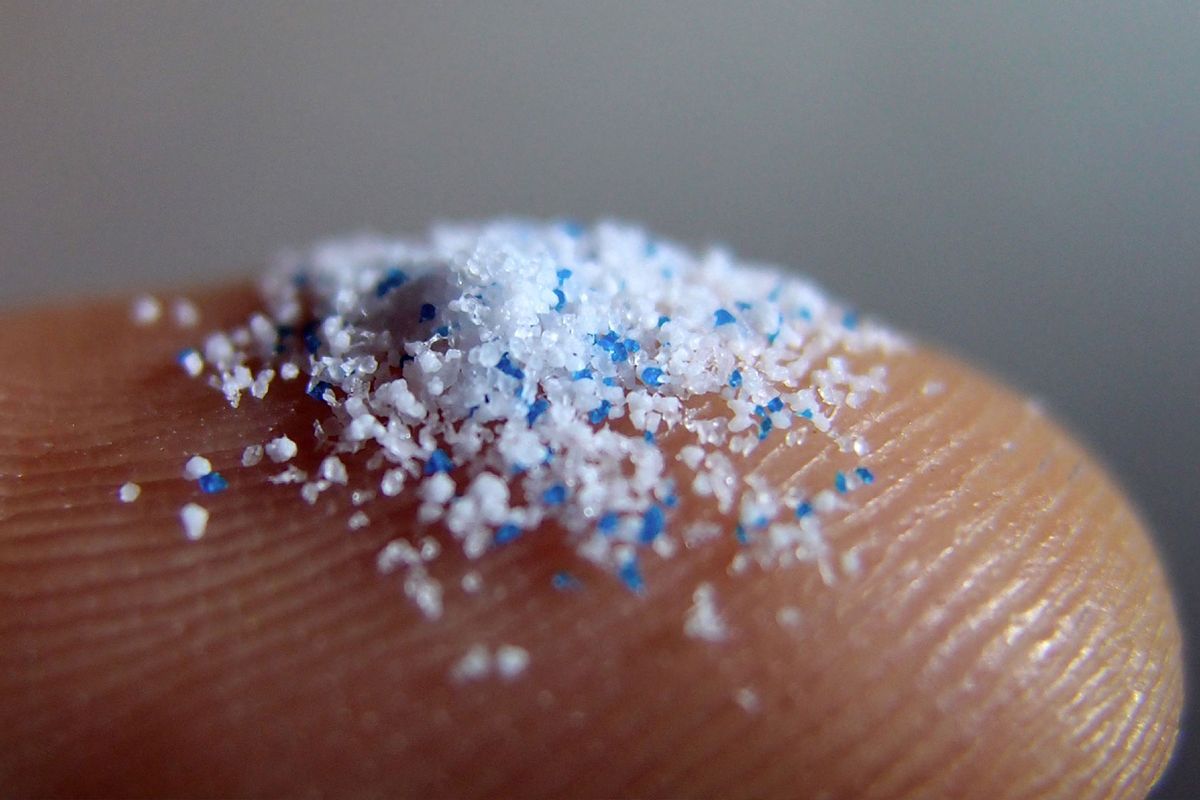When inhaled at moderate levels, plastic particles without dangerous additives appear to be able to disrupt sex hormones, according to a new study published by researchers at Rutgers University.
Previously, research suggested that chemical additives used to improve plastics, like bisphenol-A (or BPA), were potentially having all kinds of disruptive effects on human hormones. Alarming research into BPA spurred numerous manufacturers of goods with plastics in them to advertise them as "BPA-free."
Yet this new study suggests that even plastic without BPA can have comparable endocrine-disrupting effects.
"This is one of the first studies to show endocrine disrupting effects from a plastic particle itself, not based on exposure to the plasticizing chemical," said Phoebe Stapleton, assistant professor at the Rutgers Ernest Mario School of Pharmacy and senior author of the study published in Particle and Fiber Toxicology, in a media statement. "The other innovation was the method of exposure."
As explained by Stapleton, previous studies have injected animals with the particles being studied, or they've been fed to them. In their study, published in the journal Particle and Fibre Toxicology, the researchers found a way to successfully aerosolize the particles so they could see what happened to them when inhaled. Plastic is so pervasive in human environments that this is a common method of absorption into the body.
Stampleton and her colleagues used extremely fine, food-grade nylon powder to model the potential effect of extremely tiny, "nanoscale" particles or plastic. In their experiment, researchers placed the powder on a rubber pad and put the pad on top of a bass speaker. The pulse of the bass sent small particles into the air, which delivered them to the rats used in the experiment, who breathed them in. Twenty-four hours later, the researchers observed the potential toxicological effect of a one-day exposure. Researchers followed up to study the potential impact on pulmonary inflammation, cardiovascular function, systemic inflammation and endocrine disruption. They found an impairment in vascular function and a decrease in the levels of the reproductive hormone 17 beta-estradiol.
Want more health and science stories in your inbox? Subscribe to Salon's weekly newsletter The Vulgar Scientist.
"Unfortunately, there's very little that people can do to reduce exposure at the moment," Stapleton said. "You can be aware of your flooring, wear natural fibers and avoid storing food in plastic containers, but invisibly small plastic particles are likely in nearly every breath we take."
Many believe that the disruption of sex hormones delivered by the endocrine system could explain consistently declining fertility rates across the Western world. As Dr. Shanna Swan, a professor of environmental medicine and public health at Mount Sinai School of Medicine in New York City, previously told Salon, it is possible that the dramatic decrease in reproductive health over the last 40 years is partly because of our everyday exposure to chemicals that affect human hormones.
"An endocrine disruptor is a chemical that impacts the body's endogenous natural hormone function. And by impact, it could be increases, slows, or interferes with in various ways," Swan said. "The most profound way they do that is by disturbing prenatal development, so that the exposure to the pregnant woman early in pregnancy is going to have the biggest impact on later reproductive health and function in the offspring."
As Salon has previously reported, microplastics — meaning are plastic particles that are five millimeters or less across or in length — have polluted virtually every inch of the planet, from the deepest parts of the ocean to the most remote regions of the rainforest. Animals small and large constantly eat microplastics accidentally, which are sent up the food chain, while humans themselves ingest the rough equivalent of a credit card's worth of plastic each week.
Stapleton said it is tough for people to protect themselves from the damaging effects of plastics today.
"Unfortunately, there's very little that people can do to reduce exposure at the moment," Stapleton rued. "You can be aware of your flooring, wear natural fibers and avoid storing food in plastic containers, but invisibly small plastic particles are likely in nearly every breath we take."



Shares